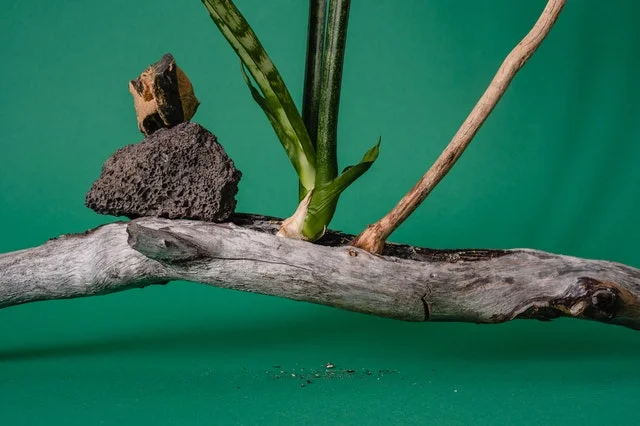Table of Contents
How to Care for Sansevieria Hahnii
Sansevieria Hahnii is an evergreen species of plant that is native to subtropical regions of India, Africa, and Europe.
This plant tend to look like an open rose that is heavily textured, and it features a dense rosette with dark green leaves and crossbands of grey-green. These plants can grow to a maximum of twelve inches, but most are between six and eight inches.
What Does Your Sansevieria Hahnii Require?
Light Requirements
Sansevieria Hahnii plants prefer environments with bright light, but with full shade. These plants are very hardy and can survive in challenging circumstances and will even tolerate environments with a low amount of light.
Plants that have a shortage of light or a shortage of water will have a problem with stunted growth and the plant will be weakened.
Temperature Requirements
These plants can be grown at normal room temperatures all year round with a maximum temperature of between eighteen and twenty degrees centigrade.
Over the winter months, your Sansevieria Hahnii will need to be kept in temperatures between thirteen and sixteen degrees centigrade with a reduced amount of water.
Ensure that your Sansevieria Hahnii plant stays free from frost during the winter months. When the days start to get lighter in the spring months, increase the amount of sunlight that the plant has whilst gradually increase temperature and watering.
Soil Requirements
These are a desert species of plants. Therefore, they prefer a drier soil which has good drainage and a good level of nutrients. Soil that is designed for cactuses is very good for these plants or a substrate that is a mixture of sand and gravel.
These plants can have better permeability with some added clay pebbles or perlite. Avoid using garden soil for these plants as it is not suitable.
Humidity Requirements
Sansevieria Hahnii plants do not require any additional humidity. These plants do not mind being in dry or stale air. Although they can adapt well to living in bathrooms where they can get slightly more humidity.
How to Water Sansevieria Hahnii
Sansevieria Hahnii plants need to be watered at the lower part of the plant and only water once the soil has become dry. Avoid letting water stand on the leaves of the plant and also avoid overwatering.
- A moderate level of watering is only required every couple of weeks.
- Avoid watering thoroughly.
- Before watering use a finger to test the level of moisture in the soil. The soil should be dry at a depth of about one inch.
- During the autumn and winter months, the level of watering should be reduced.
- When the plant is kept in darker areas, it will require less watering.
- Avoid adding the water directly to the rosettes.
- Drain off the excess irrigation water. Avoid waterlogging the plant.
How to Fertilise Sansevieria Hahnii
These plants will need to be fed twice a year, once in the spring and once in the summer. It is best to feed your Sansevieria Hahnii using an all-purpose liquid houseplant fertiliser.
Although it is best to feed this plant, it can survive without being given fertiliser. Sansevieria Hahnii plants will spread quickly, which means that they will probably need to be given fresh soil on an annual basis, which will provide plenty of nutrients.
Extra Tips for Sansevieria Hahnii
Pests and Diseases
Sansevieria Hahnii is a species of plant which tends to be free from problems. When these plants are kept in poor conditions, they will not be as robust and can lead to them developing problems.
The pests that will more commonly affect these plants include aphids, mealybugs, and spider mites. Another common problem that could affect these plants is overwatering and this causes more problems than underwatering.
Pruning
Some plants can develop very big leaves; however, these plants grow slowly. It is not recommended to cut the leaves back as the corresponding roots will not sprout again.
Unsightly edges may turn brown and this will also provide a gateway for pathogens and fungi. When pruning, it is important to remove full leaves close to the soil. Dry and brown leaves should be removed.
Repotting
These plants will need to be re-potted when the roots start to grow out of the pot. In some cases, kinking leaves will break as the rhizome will not be able to be anchored firmly in the soil.
A new layer of soil should be placed on the pot when the plant is in a pot that is big enough. Sansevieria Hahnii plants are best re-potted during March and April.
Propagation
Sansevieria Hahnii plants can be propagated from either stem cuttings or through plant division.
Propagation from Stem Cuttings
Propagation from stem cuttings will take time as these are slow growing plants and it can take a couple of years for the plant to grow.
- Remove a whole leave just above the soil.
- Divide the cutting into even pieces roughly a size of ten centimetres.
- Make a mark to indicate the top and the bottom of the cutting.
- Dip the edge on the lower side of the cutting into a rooting powder.
- Put the cutting lower edge a few centimetres deep in the growing medium.
- Put the new plant into an area that is warm and bright. Avoid direct sunlight on the plant.
- Keep the new plant moist but avoid making it too wet.
The cutting should start to develop roots after a couple of weeks, and the offshoots will start to appear shortly afterwards. The piece of leave can then be removed as the plant will develop from the emerged rhizome.
Propagation from Plant Division
Plants that have grown too big can be used to create new plants. Propagation from plant division is best done at the same time as repotting. Have a pot ready with repotting with suitable substrate to put the new plant into.
- Remove the Sansevieria Hahnii plant from the pot.
- Carefully remove the substrate from around the roots.
- Check for offshoots, small side shoots, or rosettes on the side, as these are ideal for separating.
- Cut off the chosen part from the adult plant. The cutting should be carried out using a disinfected knife that is sharp.
- In cases where the plant is too big, it can still be divided. Each rhizome piece should have at least one shoot but its best when they have more.
- Immediately plant the separate pieces after they have been divided. Using cactus soil or a soil and sand mixture for the new plants.
It is not necessary to use rooting powder as the pieces are already rooted. The new plant will need to be looked after in the same way as an adult plant.
FAQ
How do you take care of Sansevieria Hahnii?
Sansevieria Hahnii is a relatively short and stubby plant, which tends to only grow to about twelve inches in height. These plants are well known for their attractive foliage.
Although these plants can tolerate a low level of light, they will do better when they have a good amount of light, but avoid direct sunlight. Water these plants below the foliage at the base and only water when the soil becomes dry.
Avoid allowing these plants to become soggy, as this can cause serious damage to your Sansevieria Hahnii plant. These plants are best placed on a shelf or table in a north facing window.
How do I Care for Sansevieria During the Winter?
During the winter months, water your Sansevieria Hahnii less regardless of where it is kept and what the weather is like.
Water your Sansevieria Hahnii by pouring water onto the soil around the base of the plant rather than applying it to the centre of the plant. Sansevieria plants are not really affected by bacteria, fungi, or bugs.
How Often Should I Water Sansevieria?
Incorrect watering of Sansevieria plants can cause problems for these plants. Watering is one of the biggest causes of problems.
Water should only be added to the soil and never be applied to the actual foliage. Avoid the water touching the leaves, as this can cause the leaves to rot and damage the plant.
How Do You Know When Sansevieria Needs Water?
Sansevieria plants should only be watered when the soil is dry. Finger test the soil before applying more water, and it should only be added when the top inch of soil has dried. It is very easy to overwater these plants.
Therefore, care needs to be taken to avoid this problem, as it can lead to root rot.
Why Does Sansevieria Plants have Brown Leaves?
The most common reason that these plants will develop brown leaves is due to root rot caused by overwatering. This problem can also be caused by low temperatures.
Is Sansevieria Hahnii toxic?
Sansevieria Hahnii is a toxic species of plant, and all parts of the plant are toxic. Therefore, keep it away from pets and children.
Can Sansevieria Plants Purify the Air?
One benefit of Sansevieria plants is that they can purify the air in the area where the plant is kept. These plants can remove formaldehyde, benzene, xylene, toluene, and trichloroethylene from the atmosphere.
One plant per one hundred square foot was enough to clean the environment in a space station. Improving air quality in the bedroom can also be beneficial for a better night’s sleep.
Photo by Marina Leonova from Pexels


